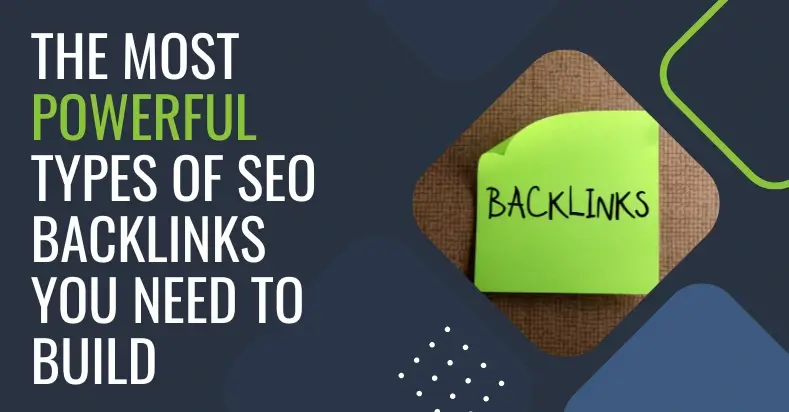Search engine optimization (SEO) is a critical aspect of SEM marketing. One of the most important elements of SEO is building backlinks or links from other websites that point to your site. Backlinks are a way for search engines to determine your website’s authority, quality, and relevance. The more high-quality backlinks you have pointing to your site, the higher your site will rank in search engine results pages (SERPs). Because search engines like google, yahoo use them as a ranking signal.
There are many different types of SEO backlinks, each with their own unique characteristics and benefits. Some backlinks are perfect for general SEO and some are for local SEO purposes. Here, we will discuss some of the most common types of backlinks and their impact on SEO.
1-Natural Backlinks
Natural backlinks are those that are earned organically, without any specific effort to acquire them. These links are typically the result of high-quality content that is shared and linked to by other websites. Natural backlinks are considered to be the most valuable type of backlink, as they indicate that your content is relevant and useful. Usually, types of SEO backlinks will have hyperlinked text such as this anchor text pointing to your site.
2-Editorial Backlinks
Editorial backlinks are those that are earned through the article publication process of a website. These links are typically the result of a piece of content being published (guest posts) on a website, and then other websites linking to it. Editorial backlinks are considered to be high-quality, as they indicate that the linking website has a high level of editorial standards. Some of the best editorial backlinks come from websites such as Forbes, Entrepreneur, U.S. News and World Report, Wired Magazine, etc. Because articles from these websites have high user search intent quality. These types of backlinks can also increase website traffic while improving visibility.
3-Self-Created Backlinks
Self-created backlinks are those that are created by the website owner themselves. These types of SEO backlinks are typically created through link-building strategies, such as submitting articles to article directories or creating profiles on social media sites. While self-created backlinks can be effective in increasing a website’s search engine rankings, they are not as valuable as natural or editorial backlinks, as they do not indicate that other websites find the content to be relevant and useful.
4-Nofollow Backlinks
Nofollow backlinks are links that do not pass on link juice (ranking power) to the linked website. These links are typically used when a website owner does not want to vouch for the linked website’s content, or when a website owner wants to link to a website without passing on any ranking power. Nofollow backlinks do not have as much of an impact on search engine rankings as dofollow backlinks, but they can still be valuable for driving traffic to a website.
5-Dofollow Backlinks
Dofollow backlinks are links that pass on link juice (ranking power) to the linked website. These links are typically used when a website owner wants to vouch for the linked website’s content, or when a website owner wants to link to a website and pass on ranking power. These types of SEO backlinks can come from local directories and citation websites and pass as dofollow sometimes.
6-Web 2.0 Backlinks
Web 2.0 backlinks links come from web applications, content builders, and web development sites such as Google Docs, Flickr, YouTube, WordPress, and Facebook. These sites usually let you build and manage content within. Above all, they are websites with high (DA) domain authority.
7-Contextual Backlinks
Contextual backlinks are links that are included within the content of a website. These links are typically created through link-building strategies, such as creating high-quality content and then linking to it from other websites. Contextual backlinks can be valuable for increasing search engine rankings, as long as they follow white hat SEO guidelines. Most wordpress website owners take advantage of this link-building strategy at the beginning of the SEO campaigns.
In addition to that, SEO optimization of your website is a crucial part of your success. On-page SEO and technical components have to implement during the web design process. Including robot.txt files and your sitemap optimization which can help crawlers aka bots discover your web pages.
